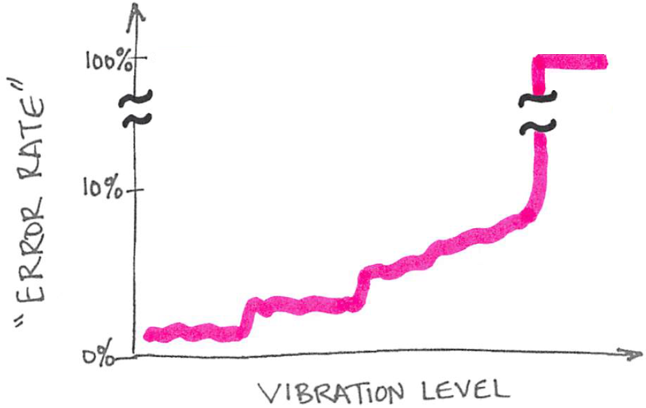We’ve written a lot about how laboratory instruments are sensitive to vibration and noise. It should be obvious that lab tools are generally more sensitive than people. But it might not be obvious just how sensitive the different tools and processes are. In this blog post we put some “order-of-magnitude” numbers on these vibration sensitivities and typical levels.
Determining lab building vibration criteria: consequences vs. interference
There’s an art to developing floor vibration criteria, and the complexity increases when there aren’t explicit limits given to us by tool vendors. Even when those vendor-supplied instrument criteria are available and realistic, we need to think about what those criteria mean and how aggressively we should view risks to the project.
What do we do with crazy noise or vibration criteria?
Traffic vibration: road surface quality drives vibration impacts
Bright-line vibration and noise criteria
If you’re outfitting a low-vibration imaging suite or laboratory, you’ve probably had to read a few tool installation guides for off-the-shelf (as opposed to hand-built) instruments. These documents are provided by instrument vendors and provide some environmental guidelines for parameters like floor vibration, acoustical noise, EMI, temperature, humidity, and more.
Building vibration and outlier research lab sensitivities
When it comes to vibration sensitivities, most lab groups operate fairly routine research programs. But if “most” groups run “ordinary” programs, then you shouldn’t be surprised when you run into one group with an extraordinary program. This happened to me many years ago, and it completely opened my eyes to the incredible diversity in R&D.





